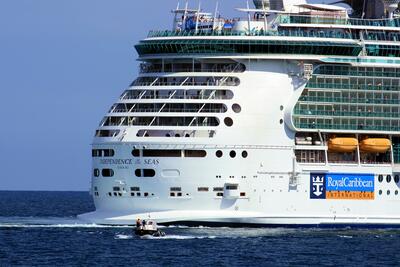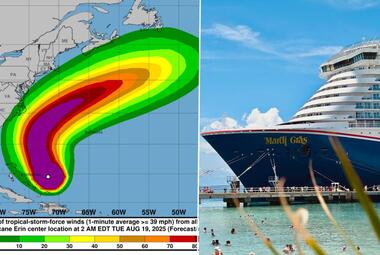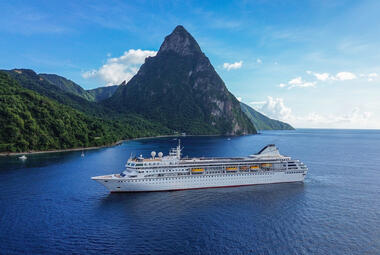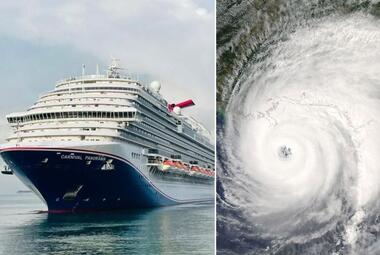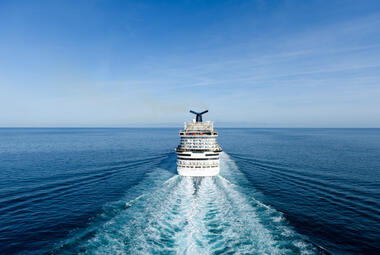A Trump administration official blasted cruise ships for avoiding taxes.
On Wednesday, Secretary of Commerce Howard Lutnick appeared on Fox News to discuss President Donald Trump's plan to eliminate the Internal Revenue Service. He then ranted about how cruise ships, supertankers, and foreign-made alcohol avoid paying taxes.
"You ever see a cruise ship with an American flag on the back?... None of 'em pay taxes...This is going to end...and those taxes are going to be paid," Secretary Lutnick said.

He claimed that large cruise ships are flagged in different countries, such as Panama or Liberia, rather than sporting an American flag to avoid paying federal income tax.
Since making the comment, cruise line stock prices on the Nasdaq exchange have plummeted. For example, Carnival Corp's stock has dropped about 6% within the last five days, while Royal Caribbean Group's stock has fallen by approximately 7% over the same period.
While Lutnick is correct in that cruise ships are foreign-flagged, it’s important to note that cruise lines still pay U.S. taxes.
What taxes do cruise lines pay?

The U.S. is home to many cruise line headquarters, and these companies contribute to the U.S. economy through various forms of taxation. For example, Royal Caribbean, Norwegian, and Carnival Cruise Line have massive offices in Florida that employ thousands of Americans. Even MSC Group announced plans to expand its presence in Miami with a new North American headquarters!
As such, they're responsible for paying payroll taxes. Cruise Lines International Association (CLIA) said cruise lines pay nearly $2.5 billion in taxes and fees in the U.S., which amounts to 65% of the total taxes cruise lines pay worldwide.
The cruise industry also meaningfully contributes to the economy. For example, in 2023, the cruise industry supported over 290,000 U.S. jobs and generated more than $60 billion to the economy.

Additionally, while many may assume port fees only apply to foreign ports of call, such as Cozumel, Mexico, cruise ships also call at U.S ports. For example, cruises to Alaska typically charge passengers anywhere from $200 to $300 in port fees for docking in ports like Skagway, Juneau, and Ketchikan.
U.S. laws make it nearly impossible to construct American-flagged cruise ships
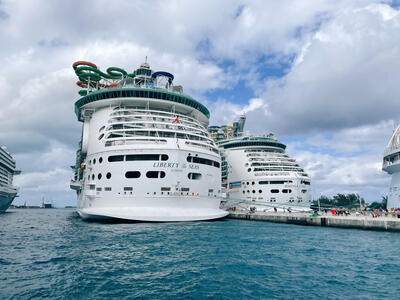
Modern cruise ships aren't built in the United States. Instead, they're constructed at shipyards in France, Finland, Italy, etc., primarily due to the Passenger Vessel Services Act signed into law by President Grover Cleveland in 1886.
The act was meant to protect American jobs. However, among the new regulations, a ship had to be built in a U.S. shipyard, owned by an American company, and staffed by an American crew to qualify for a U.S. flag.
Additionally, all officers must be U.S. citizens, with 70% of the crew being at least resident aliens (AKA Green Card holders).
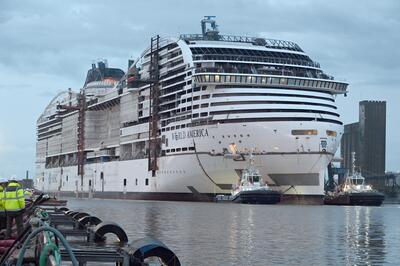
After World War II, the United States implemented stricter registration laws to protect the maritime industry. However, these measures had the opposite effect. As such, many shipyards closed, while the few remaining in operation focused on military work.
Today, American shipyards are not equipped with the experience of building modern cruise ships, according to Commander Don Goldstein, Retired United States Coast Guard. They also don't have the capacity or supply chain to handle the large-scale construction of mega-ships.
Converting existing cruise ships to American-flagged vessels isn't easy, either, as Coast Guard regulations stipulate that U.S.-built ships must be fully assembled within the United States, with all "major components of the hull and superstructure" fabricated domestically.
Read more: How are cruise ships built?

The only American-flagged ships operating in the U.S. are river and coastal cruise lines, such as American Cruise Lines. Compared to mainstream lines like Royal Caribbean and Carnival, the fares are more expensive, costing around $5,800 per person for a 9-night cruise to Alaska in July 2025.
Norwegian Cruise Line also operates one U.S.-flagged ship, the Pride of America, which sails exclusively in Hawaii. This is one of the reasons why cruises on Pride of America are often more expensive than other weeklong voyages within the fleet.
According to NCL's website, the cheapest sailing on Pride of America starts at $1,950 per person for an interior stateroom.
Will cruise lines raise their prices?
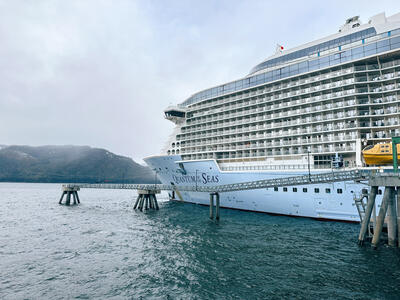
Nothing will change in the immediate future. However, Vince Ciepiel of Cleveland Research believes the most likely "tax" would involve increasing port fees at U.S. ports, as reported by Royal Caribbean Blog.
"Taking a quick look at port passengers, the U.S. sees just over 30M in passengers travel through U.S. ports (the two largest being Miami over 7M and Port Canaveral near 7M). If the U.S. government were to impose an additional ~$30 fee (not anchored to this guess, we welcome any feedback here) on passengers, that would raise about $1B in tax revenue," he explained.
Increased port fees aren't new. In fact, many popular cruise destinations worldwide, including Greece and Mexico, have already considered or implemented similar measures in response to the growing issue of overtourism.


